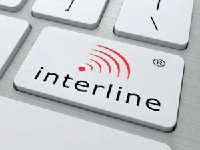

What are the U-NII Frequency Bands? or what are the Unlicensed National Information Infrastructure Frequency bands?
The Unlicensed National Information Infrastructure (U-NII) frequency bands are part of the radio frequency spectrum from 5.150-7.125 GHz defined by the US Federal Communications Commission (FCC). It is used by WLAN devices and some ISPs and radio operators.
U-NII consists of 8 ranges which are defined by the US FCC and named as U-NII 1 through 8. U-NII 1 to 4 are for 5 GHz WLAN (IEEE 802.11a and later) and U-NII 5 to 8 are for 6 GHz WLAN (802.11ax). Some wireless ISPs also use U-NII bands in the frequency 5.725–5.825 GHz. Licensed radio operators in the US are also authorized to utilize the 5.650–5.925 GHz U-NII frequency range by the FCC.
The 8 U-NII frequency bands are:
|
Name |
Freq. Range (GHz) |
Bandwidth (MHz) |
Max Power |
Max EIRP |
|
U-NII-1 |
5.150–5.250 |
100 |
1 W |
200 W (53 dBm) |
|
U-NII-2A |
5.250–5.350 |
100 |
250 mW |
1 W |
|
U-NII-2B |
5.350–5.470 |
120 |
— |
— |
|
U-NII-2C |
5.470–5.725 |
255 |
250 mW |
1 W |
|
U-NII-3 |
5.725-5.850 |
125 |
1 W |
200 W |
|
U-NII-4 |
5.850–5.925 |
75 |
— |
— |
|
U-NII-5 |
5.925–6.425 |
320 |
— |
36 dBm 30 dBm (LPI) |
|
U-NII-6 |
6.425–6.525 |
100 |
— |
30 dBm (LPI) |
|
U-NII-7 |
6.525–6.875 |
320 |
— |
36 dBm 30 dBm (LPI) |
|
U-NII-8 |
6.875–7.125 |
320 |
— |
30 dBm (LPI) |
U-NII 1 (5.150–5.250 GHz) is also called U-NII Low and was limited to indoor use only. Regulations require use of an integrated antenna for U-NII 1 with power limited to 50 mW. This was changed in 2014 to permit outdoor operation, increase maximum fixed power to 1 W, maximum fixed point-to-multipoint EIRP to 4 W (+36 dBm) and point-to-point EIRP of up to 200 watts (+53 dBm). Strict out-of-band emission rules for U-NII 1 limit its practical point-to-point power to lower levels.
U-NII 2 (5.250-5.725 GHz) is divided into three subsections:
- U-NII 2A (5.250–5.350 GHz) is for both indoor and outdoor use. According to regulations, it is subject to Dynamic Frequency Selection (DFS) or radar avoidance which is a mechanism to prevent electromagnetic interference with other usages of this frequency by technologies that predated WLAN such as military radar, satellite communications etc. User-installable antennas are allowed for U-NII 2A and power is limited to 250 mW.
- U-NII 2B (5.350–5.470 GHz) currently has 120 MHz bandwidth of the spectrum unallocated by the FCC for unlicensed use.
- U-NII 2C (5.470–5.725 GHz) is also called U-NII Worldwide and is allocated for both outdoor and indoor use. It is subject to DFS and has its power limited to 250 mW. The FCC added this spectrum to align the frequency bands used by U-NII devices in the US with bands in other parts of the world.
U-NII 3 (5.725-5.850 GHz) is also called U-NII Upper or U-NII / ISM because it overlaps with the ISM band. User-installable antennas are allowed in this band and power is limited to 1 W.
U-NII 4 (5.850–5.925 GHz) is presently only usable for Dedicated Short-Range Communications Service (DSRC)/ITS which is a one-way/two-way short to mid-range wireless communication designed for automotive applications and by licensed amateur radio operators.
U-NII 5 to 8 is an allocation of 1.2 GHz of unlicensed spectrum in the 6 GHz band (5.925–7.125 GHz) for Wi-Fi use. The Wi-Fi Alliance has introduced the term "Wi-Fi 6E" (802.11ax) to identify and certify Wi-Fi devices that support this band. Standard operation mode is allowed for only U-NII 5 & 7 bands with automatic frequency coordination (AFC) which is a system that is aware of the location of the necessary services and will inform the access point (AP) of which parts of the spectrum it may operate, based on the AP’s location, antenna height, and transmit power.
Regulations require standard mode power to be limited to 36 dBm and a maximum spectral density to 23 dBm/MHz. There is also a Low-power indoor (LPI) operation mode for use in indoor environments where access points are limited to a maximum EIRP of 30 dBm and a maximum power spectral density of 5 dBm/MHz. Operation in this LPI mode is possible on all four U-NII bands (5, 6, 7, 8) without the use of AFC. To help ensure they are used only indoors, these LPI access points are not permitted to have connectors for external antennas, be weather-resistant, or run on battery power. Client devices in the LPI mode operating in these bands are limited to 24 dB below the power of the access point. There is even a future possibility of issuance of a third class of very low power devices such as hotspots and short-range applications for these 4 bands.
